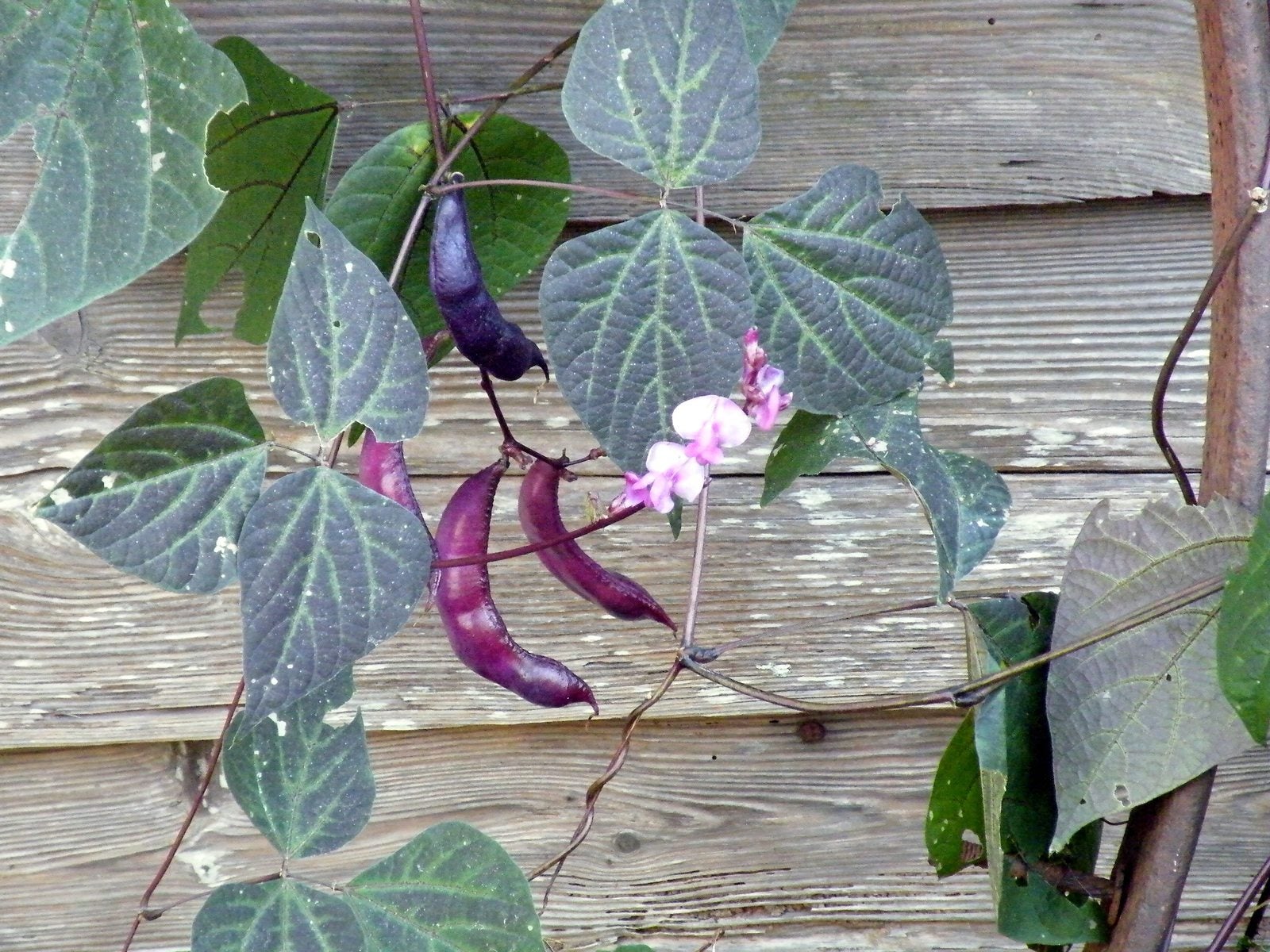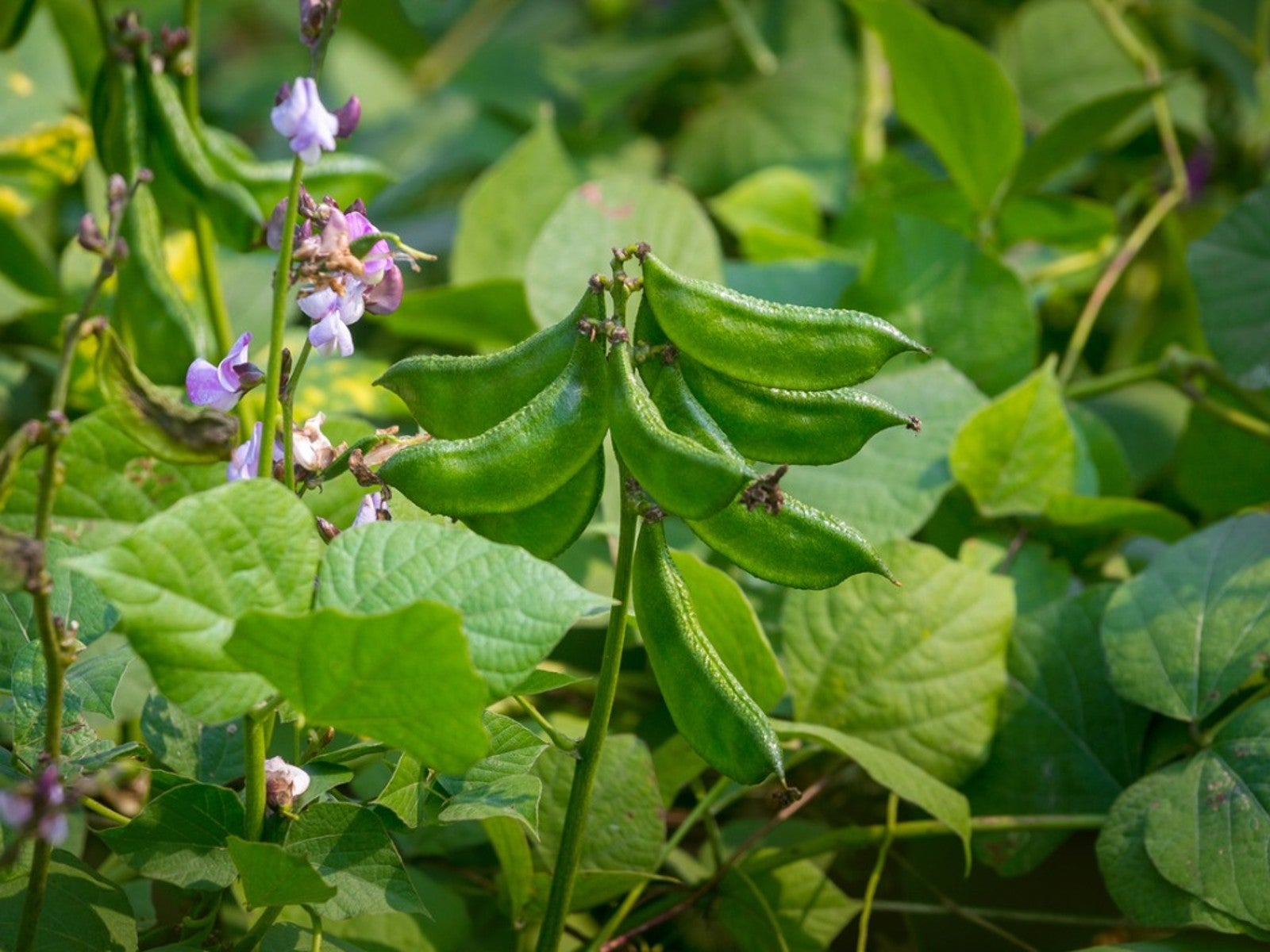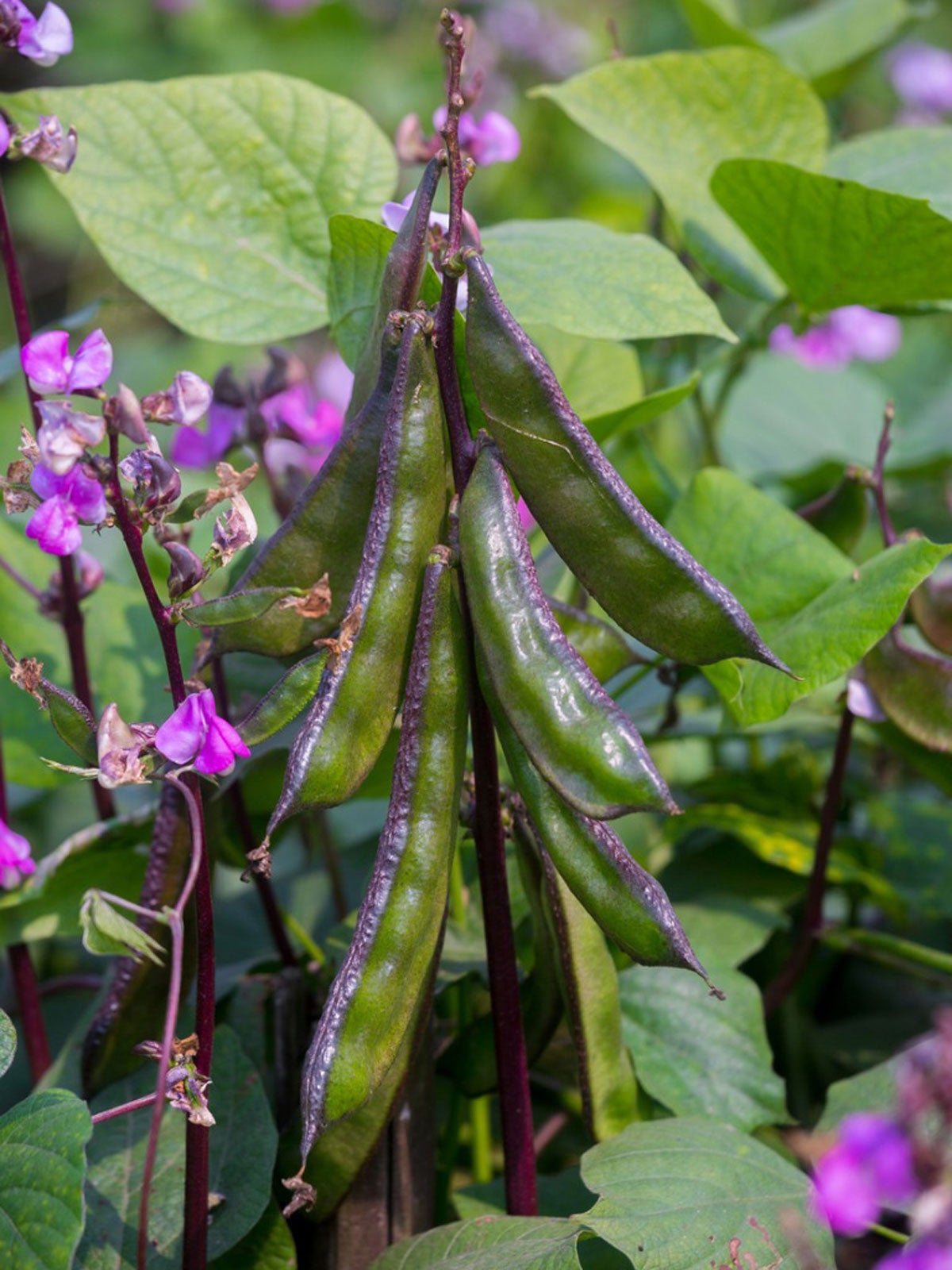Hyacinth Bean Vines: Tips On Growing Hyacinth Beans In Pots


If you have a wall or fence you want to cover, you can’t go wrong with beans. Even if you’re not trying to mask something ugly, beans are great to have in the garden. They’re fast-growing and vigorous, and they often produce interesting flowers and tasty pods. Hyacinth bean vines go above and beyond in this regard. With light to dark purple flowers and striking fuchsia pods, they’ll brighten up absolutely any garden. What if you don’t have a garden though? Is it possible to grow these beauties in a pot and up a fence or railing? Keep reading to learn more about how to plant hyacinth beans in containers.
Container Grown Hyacinth Bean
As with all potted vines, container-grown hyacinth bean vines need something to climb on. In their native tropics, where they can grow for several years, they often reach over 30 feet (9 m.) in length. Hyacinth bean vines aren’t at all frost tolerant though, so, in most places, they’re grown as annuals. Even in a single growing season, however, they can get as long as 15 feet (5 m.). This means they need something tall and strong to climb. Growing hyacinth beans in pots means that you can place them where you want. Place your container near the bottom of a railing or fence and let it climb away. Alternatively, plant your beans in a hanging pot and let the vines trail down to the ground in a spectacular cascade.
Growing Hyacinth Beans in Pots
Hyacinth bean vines are very forgiving when it comes to growing requirements. They will do well in soil that is poor and both slightly alkaline and acidic. Any standard potting medium should be more than enough. They do require well-drained soil, so make sure your container has plenty of drainage holes. They perform best in full sun, but they can take some shade. You can sow the beans outdoors after the last chance of frost or start them inside several weeks earlier. The beans themselves are edible, but toxic if eaten raw. Always cook your hyacinth beans thoroughly before eating them.
Gardening tips, videos, info and more delivered right to your inbox!
Sign up for the Gardening Know How newsletter today and receive a free copy of our e-book "How to Grow Delicious Tomatoes".

The only child of a horticulturist and an English teacher, Liz Baessler was destined to become a gardening editor. She has been with Gardening Know how since 2015, and a Senior Editor since 2020. She holds a BA in English from Brandeis University and an MA in English from the University of Geneva, Switzerland. After years of gardening in containers and community garden plots, she finally has a backyard of her own, which she is systematically filling with vegetables and flowers.
-
 Terrifically Tubular Flowers For Hummingbirds: 9 Tube-Flowered Plants To Attract Hummers
Terrifically Tubular Flowers For Hummingbirds: 9 Tube-Flowered Plants To Attract HummersGrowing tubular flowers for hummingbirds helps you create the optimum feeding conditions for your winged friends. Here are nine tubed delights for hummers
By Tonya Barnett
-
 How To Grow Hydroponic Tomatoes For Fresh Indoor Harvests – No Soil Required
How To Grow Hydroponic Tomatoes For Fresh Indoor Harvests – No Soil RequiredLearning how to grow tomatoes in water is easy and allows you to harvest fresh-home-grown produce in every season without any mess.
By Ellen Wells
-
 Pruning Hyacinth Bean Plants: When To Prune Hyacinth Bean Plants
Pruning Hyacinth Bean Plants: When To Prune Hyacinth Bean PlantsPruning may sacrifice flowers, but if the plant gets out of control, you know when to prune hyacinth bean. Pruning is strictly for aesthetics and to keep the plant in a habit you require. This article has additional information on pruning hyacinth bean plants.
By Bonnie L. Grant
-
 Purple Hyacinth Bean Care - How To Grow A Hyacinth Bean Vine
Purple Hyacinth Bean Care - How To Grow A Hyacinth Bean VineA vigorous, ornamental, annual vine, purple hyacinth bean plant, displays beautiful, pinkish-purple blossoms and interesting, reddish-purple pods that grow to be about the same size as lima bean pods. Read more here.
By Susan Patterson